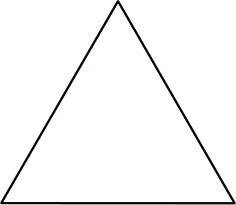London Pollution Disaster
The whole world needs to burn coal and oil, right? So what’s wrong with our coal? Do you know how much coal China has burned? In 2013, we had already burned 3.6 billion tons. But do you know how much all the other countries in the world have burned? We have burned more coal than the rest of the world combined.
The last time a country had this kind of consumption was England in 1860. But as a result they paid a heavy price. Deep in an abandoned mine in South Wales lies the heart of England's industrial age. It used to drive the most powerful empire in the world. But as a result it also brought this country a frightening black disaster. These 4 smokestacks are 103 meters tall. They are the symbols of the industrial age in England. When the Battersea Power Station was completed in 1930, it would burn approximately 10,000 tons of coal per week to supply one fifth of the electricity for the entire city of London. You could say that London was eating coal to survive trains, boats, iron, steel, everyday items. In all of London, it was like millions of micro-volcanoes were all erupting at once.
Since they were burning large quantities of poor quality coaland emitting pollution at low elevations, the amount of pollution from family chimneys was double the amount of pollution from industry. Slowly with time London became completely covered in soot. People wore face masks to go to school. Wore face masks to go shopping. Wore facemasks to walk their dogs. Wore face masks to kiss.
The day of the disaster was December 5, 1952 a cold front stretched across the English Channel and covered the entire river valley of the Thames River. This kept the smog under the clouds, preventing it from dissipating. Poison smoke has closed down. Residents have difficulty in breathing the murky air. People walking down the street couldn’t even see their own feet. You needed a blind person to lead you home. Traffic police used large lamps to light themselves up so they wouldn’t get hit by cars. All of London was completely silent. You could only see ambulances, because they had to bring those whose lives were in danger to the hospital. But when they were on the road they had to rely on people holding torches to show them the way.
In the end 12,000 people died in the smog. The lungs of the dead were sampled and close examination confirmed that they died due to prolonged exposure to black carbon, a by-product of burning coal and a short-term overexposure to a high concentration offine particulate matter containing heavy metals. The Coalition for Clean Air calculated that the concentration of pollution in London at the time might have surpassed the current pollution in China by a large margin. Even though PM2.5 was not measured at the time. But during the Great Smog the concentration of sulfur dioxide was 190 times the WHO standard and exceeded China's PM2.5 standard by an order of magnitude.
Notes:
Folksonomies: pollution air pollution
Taxonomies:
/science/ecology/pollution (0.654368)
/business and industrial/energy/coal (0.514687)
/home and garden/home furnishings/lamps and lighting (0.302983)
Keywords:
London Pollution Disaster (0.973264 (negative:-0.518870)), coaland emitting pollution (0.904236 (negative:-0.735515)), frightening black disaster (0.863230 (positive:0.703121)), Battersea Power Station (0.857743 (neutral:0.000000)), entire river valley (0.821245 (neutral:0.000000)), burning coal (0.765698 (negative:-0.463800)), current pollution (0.727301 (negative:-0.581656)), Great Smog (0.715660 (neutral:0.000000)), time London (0.701621 (negative:-0.343467)), face masks (0.701216 (negative:-0.387310)), heavy price (0.700206 (neutral:0.000000)), South Wales (0.697189 (neutral:0.000000)), powerful empire (0.695651 (positive:0.590809)), low elevations (0.693982 (negative:-0.735515)), high concentration (0.693872 (negative:-0.463800)), family chimneys (0.693688 (negative:-0.636566)), industrial age (0.687141 (neutral:0.000000)), murky air (0.686689 (negative:-0.703122)), large quantities (0.685485 (negative:-0.735515)), everyday items (0.684994 (positive:0.236586)), entire city (0.683155 (neutral:0.000000)), English Channel (0.682038 (neutral:0.000000)), Poison smoke (0.679983 (negative:-0.811272)), sulfur dioxide (0.679484 (neutral:0.000000)), large margin (0.678643 (negative:-0.581656)), short-term overexposure (0.678422 (negative:-0.463800)), Traffic police (0.676698 (neutral:0.000000)), black carbon (0.676118 (negative:-0.584384)), Thames River (0.675968 (neutral:0.000000)), blind person (0.671265 (negative:-0.563478))
Entities:
London:City (0.785971 (negative:-0.462562)), China:Country (0.500843 (negative:-0.556466)), England:Country (0.490475 (neutral:0.000000)), Battersea Power Station:Facility (0.387574 (neutral:0.000000)), Thames River:GeographicFeature (0.373779 (neutral:0.000000)), South Wales:Region (0.333566 (neutral:0.000000)), 3.6 billion tons:Quantity (0.333566 (neutral:0.000000)), 10,000 tons:Quantity (0.333566 (neutral:0.000000)), 103 meters:Quantity (0.333566 (neutral:0.000000)), one fifth:Quantity (0.333566 (neutral:0.000000))
Concepts:
Air pollution (0.968863): dbpedia | freebase | opencyc
Particulate (0.841196): dbpedia
Smog (0.726160): dbpedia | freebase | opencyc
River Thames (0.672474): dbpedia | freebase | yago
London (0.631875): geo | website | dbpedia | freebase | yago | geonames
England (0.593747): website | dbpedia | freebase | opencyc | yago | geonames
Soot (0.583115): dbpedia | freebase | opencyc
United States Environmental Protection Agency (0.570379): website | dbpedia | freebase | yago




